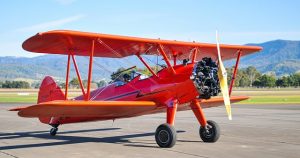
Wings are an essential part of all airplanes. In the field of aeronautics, they are airfoil structures that generate lift. As air flows over and under an airplane’s wings they’ll generate lift. Lift, of course, is the invisible force that keeps airplanes in the air.
There are different types of wings, however. Some airplanes have braced wings, for instance. Braced wings serve the same purpose of generating lift as all other types of wings, but they feature a unique design.
Overview of Braced Wings
Braced wings are characterized by the use of a supporting system. They are designed with braces that support the wings. The braces stiffen the wings with which they are used, thus providing increased strength.
Wings are less likely to bend or break when supported with braces. The braces reinforce the wings so that they can withstand greater stress without failing or otherwise succumbing to damage.
Biplanes and Braced Wings
You can find braced wings on a variety of different aircraft. They are a defining feature of biplanes. Biplanes, of course, have a stacked wing configuration. Unlike most other airplanes, they don’t have a single wing on each side; biplanes feature a top wing and a bottom wing on each side.
The top and bottom wings are connected with struts. Struts are rod-like braces. As shown in the photo above, biplanes have a top wing and a bottom wing on each side. These top and bottom wings are joined via struts.
Wire-Based Braces
Most braced wings feature either struts or wires. Struts, such as those used in biplanes, are rigid rod-like braces. Wires, conversely, are metal cables. Most wires used in wire-based braces are made of stainless steel. They are strong, durable and resistant to corrosion.
The wires used in wire-based braces can be internal or external. Internal means they are concealed and not exposed to the airplane’s exterior. External wires, on the other hand, are hidden. Whether internal or external, the wires are designed to support the wings.
Wire-based braces, however, are somewhat restrictive. They can only resist tension forces. When exposed to compression forces, they will experience slack. Strut-based braces are more versatile, as they can resist both tension and compression forces.
It’s important to note that airplanes with wire-based braces typically use strut-based braces as well. They don’t rely exclusively on wire-based braces to support their wings. Rather, they use a combination of both struts and wires for their wing braces.



